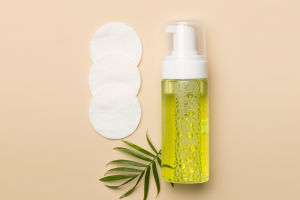Finding the perfect coffee cup size can enhance your coffee-drinking experience in ways you might not expect.
From comfort in hand to proper volume for different brews, cup size matters more than most people realize.
Choosing the right size involves considering factors like your preferred coffee type, cup material, lifestyle, and personal preferences. Here's a guide to help you discover your ideal coffee cup size.
1. Determine Your Preferred Coffee Type
The type of coffee you enjoy most plays a significant role in determining your perfect cup size. Different types of coffee come with different serving volumes, and using the right size cup can elevate the drinking experience.
- Espresso: If you are an espresso enthusiast, you’ll need a small cup. Standard espresso cups, often called demitasse cups, hold between 2 to 3 ounces (60-90ml). A smaller cup size prevents the coffee from cooling too quickly while also highlighting the concentrated flavors of espresso.
- Americano or Drip Coffee: For those who prefer Americano or drip coffee, a larger cup is necessary. These coffee types are typically served in 8 to 12-ounce cups (240-350ml). The extra space allows for adding water or milk without losing the strength or flavor of the coffee.
- Latte or Cappuccino: If you favor milk-based coffee drinks like lattes or cappuccinos, consider a medium-sized cup between 6 to 8 ounces (180-240ml). These drinks require room for the milk or foam, and choosing the correct size cup ensures a balanced ratio of coffee to milk.
2. Consider the Material of the Cup
Cup material can influence how much coffee you want to serve. Some materials retain heat better than others, which can affect your decision regarding cup size.
- Ceramic: The most common material for coffee cups, ceramic is excellent for heat retention and durability. Ceramic cups are available in a wide range of sizes, making them suitable for all types of coffee. An 8-ounce ceramic mug is a good all-around choice for most coffee lovers.
- Glass: Glass cups add a touch of elegance, especially for espresso or layered drinks like lattes. However, they tend to lose heat faster than ceramic, so smaller sizes (around 6 ounces) are typically better for retaining the temperature.
- Stainless Steel: If you’re constantly on the go, a stainless-steel cup is ideal. These cups, often double-walled and insulated, can hold larger volumes (up to 20 ounces or more) and keep coffee warm for hours. Choose a size that fits comfortably in your hand and car cup holder, typically between 12 to 16 ounces.
- Porcelain: Porcelain cups are often associated with traditional coffee sets, especially for smaller coffee servings like espresso. A 4-ounce porcelain cup works well for espresso or cortado, maintaining elegance and function.
3. Match the Cup Size to Your Lifestyle
Your daily habits and coffee-drinking routine can also help determine the best coffee cup size for you.
- On-the-go Lifestyle: If you are always on the move, a travel mug with a capacity of 12 to 16 ounces might be your best choice. It’s large enough to hold a satisfying amount of coffee and fits easily in a bag or car.
- Work-from-home or Office Setup: For those who sip on coffee throughout the day, an 8 to 12-ounce mug offers enough coffee to enjoy over a longer period without being too large to become cold quickly. Ceramic mugs are a popular choice for this setting.
- Coffee Enthusiast: If you love trying different types of coffee throughout the day, you might want a collection of different cup sizes. For example, a 3-ounce demitasse cup for espresso, a 6-ounce cup for cappuccino, and a 12-ounce cup for a morning drip coffee would cover a range of needs.
4. Balance Functionality with Aesthetics
While practicality is key, aesthetics can also influence your decision. The look and feel of your coffee cup can significantly affect your overall experience. Consider how the size of the cup matches the visual appeal.
- Handle Size: Pay attention to the size of the handle relative to the cup. For example, larger cups should have a handle that provides a secure grip, while smaller cups for espresso often have dainty handles. A cup that feels comfortable in hand enhances the drinking experience.
- Cup Shape: The shape of your cup can influence the drinking experience, too. Narrow cups keep the coffee hotter longer, while wider cups are perfect for showcasing latte art and allowing the aromas to develop. Finding the perfect balance between size, shape, and aesthetic appeal is essential for a satisfying coffee break.
5. Think About Coffee Volume and Temperature
Larger cups, while convenient, can sometimes let your coffee cool down too quickly, especially if you’re a slow sipper. If you prefer to savor your coffee over a longer period, you might be better off with smaller cups and frequent refills. On the other hand, if you drink your coffee fast or like it extra strong, a larger cup might be better for ensuring you have enough of your favorite brew.
6. Practicality and Portability
If portability is important to you, choose a cup that fits easily in your bag, backpack, or car cup holder. Travel mugs usually come in sizes ranging from 12 to 20 ounces and often have spill-proof lids and insulation to keep your coffee hot. Make sure the size you choose balances portability with functionality—too big, and it becomes cumbersome; too small, and you might find yourself refilling it too often.
Finding the perfect coffee cup size depends on a combination of factors, including your coffee preferences, cup material, lifestyle, and aesthetics. Whether you prefer a small espresso cup to savor intense flavors or a larger travel mug to keep you fueled throughout the day, the right coffee cup will enhance your coffee experience. By considering these tips, you’ll be able to choose the ideal size cup that fits your needs and elevates your daily coffee ritual.


